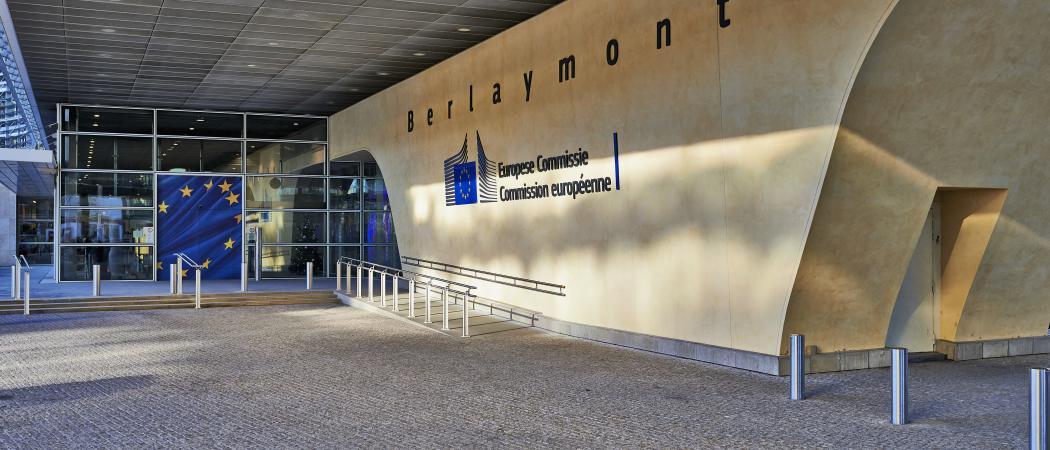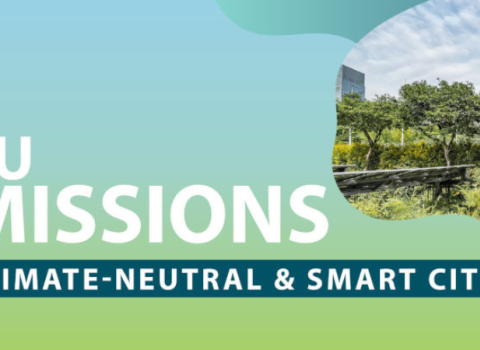Two years in, a leaked document shows the Commission has ruled its novel Mission approach to research funding is working. It wants policymakers to back the launch of a sixth programme on Bauhaus

The European Commission is set to propose a new Mission on the New European Bauhaus, according to a leaked draft of the first review of the Mission projects.
The Missions are a novel approach to research funding introduced in the EU’s €95.5 billion research programme Horizon Europe in 2021. The idea is to funnel research funding into demonstrator projects and actions enhancing dialogue, which in turn will promote innovation and leverage in external funding in the five selected areas: cancer, climate adaptation, oceans and rivers, soil and climate-neutral cities.
While the Missions have a fair few cheerleaders there are arguably, even more critics. Some didn’t like the Commission adopting such an objective-driven approach when the EU’s research budget is already stretched thin – and were unhappy to see that money going into a programme where research isn’t the main focus.
Those participating complained about the slow take-up of the approach in regions, low applications rates in many Mission calls and the failure to give the programmes the firepower they needed to become the envisioned ambitious ‘moonshots.’
The Commission says in the first two years the Missions have “individually and collectively” proven their potential. They are said to be on track to meet their ambitious 2030 targets, which include helping 100 cities achieve climate neutrality and improving the lives of at least 3 million people affected by cancer.
This reaffirms the need to do more, the Commission says, as it proposes to launch a sixth Mission on the New European Bauhaus, an EU initiative that puts a cultural spin on the Green Deal.
Thus far, the Bauhaus project hasn’t found a home in any of the EU’s programmes. It was conceived as a movement of innovators, artists and researchers rethinking public, private and work spaces in line with the EU’s green transition, whilst protecting Europe’ architectural heritage. It cuts across policy spheres, from culture to innovation, landing nowhere in particular.
For the most part, the initiative has been funded through Horizon Europe. To turn it into a concrete initiative with a clear focus, last year, the European Parliament called on the Commission to propose a dedicated Bauhaus Mission. It seems the Commission has listened.
If approved by policymakers, the new Mission will follow the same path as the other five, with the Commission appointing an expert board to come up with a plan.
A small budget increase?
The report concludes the Missions are doing their job, but it acknowledges some shortcomings. However, the overall tone is far more positive than R&D chief Marc Lemaitre struck at a recent meeting in Brussels, when he said the Missions are failing to pull in external funding.
“Missions, in financial terms, are a very modest part of the Horizon Europe budget. It’s [a few] hundred million euros per year – you don’t get very far with that,” he said. “Clearly, for missions to be ultimately successful it will require the crowding in of many other funding sources and we haven’t in all honestly seen that yet to the extent we would like,” Lemaître told a meeting organised by Poland’s National Centre for Research and Development and Business & Science Poland.
In the report the Commission argues these shortcomings call for more political and financial support.
The first issue is governance, which many still find too complex. To improve it, the Commission proposes to elect a new group of high-level representatives that would liaise with the EU Commissioners responsible for each Mission, to foster high-level dialogue. It will also encourage more dialogue at other levels to help streamline governance.
The Missions also need money to run, and Horizon Europe cannot provide enough. The total Horizon Europe contribution thus far has added up to €1.8 billion, and all Missions have been able to attract “some level of interest and commitments” from other sources. But the investment from the private sector is still lagging, and most has been contributed via the European Investment Bank (EIB).
Overall, the report suggests there’s a need to reaffirm support for the Missions to ensure their success. The Commission promises to do so, and proposes to raise the Horizon Europe Missions’ budget ceiling from 10 to 11% of Horizon Europe’s €53.5 billion Pillar 2, which funds big collaborative research projects. It’s not a big increase, but is unlikely to go down well with some of the stakeholders who warn the EU’s research fund is already overstretched.
The official review announcement, due in the coming days, will be complemented by an annex detailing the full results of the assessment for each Mission, examining their added value, R&I content, feasibility, budgets and progress, among other aspects.
What have the five Missions achieved?
Climate adaptation. The goal is to help regions better understand the climate risks they are exposed to, define ways they can increase their resilience and build at least 75 large-scale demonstration projects.
A total of 308 regional and local authorities signed up to this Mission. They are working together with the Mission implementation platform, launched in January 2023, which provides assistance. The EIB is now reaching out to the regions to find bankable adaptation projects.
Cancer. The goal is more improve the lives of more than 3 million people who have had to deal with cancer by 2030. This encompasses increasing available knowledge, prevention, improving diagnosis and treatment, and increasing the quality of life for patients and their families.
In the last two years, the Mission has fostered dialogue between member states through a new joint cancer expert group and will continue the talks with national stakeholders through the recently launched National Cancer Mission Hubs.
The Mission has also played a role in the development of UNCAN.eu, a data platform for cancer research, and the European Cancer Patient Digital Centre, where patients will be able to share their data.
Oceans. The EU’s goal here is to find a way to protect and restore marine and freshwater ecosystems while continuing to foster a sustainable blue economy.
Here, the Missions has been trying to bring coherence to fragmented governance frameworks. It has set up four ‘lighthouses’ in sea and river basins to pilot, demonstrate and deploy innovation and an implementation platform that provides support to the stakeholders involved. Next, the Commission is looking to launch European Digital Twin of the Ocean in 2024 to foster dialogue and foster knowledge.
The Mission’s Charter has attracted more than 480 action pledges adding up to €3.73 billion.
Cities. The goal is to have 100 climate neutral and smart cities in Europe by 2030, and make them the frontrunners in the climate transition that others can learn from.
More than 377 cities applied to participate, and selected participants have now started to co-create their Climate City Contracts, which will guide their transition.
The EIB has given 53 cities grants of up to €1.5 million to develop innovative solutions to the challenges they face. The Mission also has a number of joint actions with other EU programmes, including the European Innovation Council (EIC) and the Connecting Europe Facility.
Soils. The goal is to establish 100 living labs and lighthouses by the end of the decade to improve sustainable soil management and restoration. The first living lab is due to launch in 2024 and will support more than 200 testing sites.
The Mission has attracted support from various EU programmes, such as the LIFE programme, Horizon Europe’s public-private partnership with the bioeconomy industry and the EIC. In member states, more than 200 complementary activities have been launched.





 A unique international forum for public research organisations and companies to connect their external engagement with strategic interests around their R&D system.
A unique international forum for public research organisations and companies to connect their external engagement with strategic interests around their R&D system.